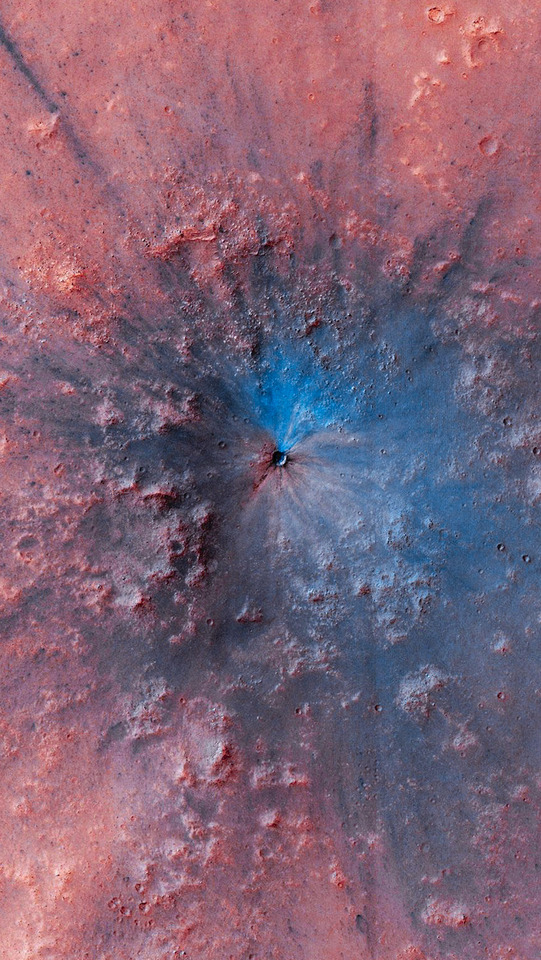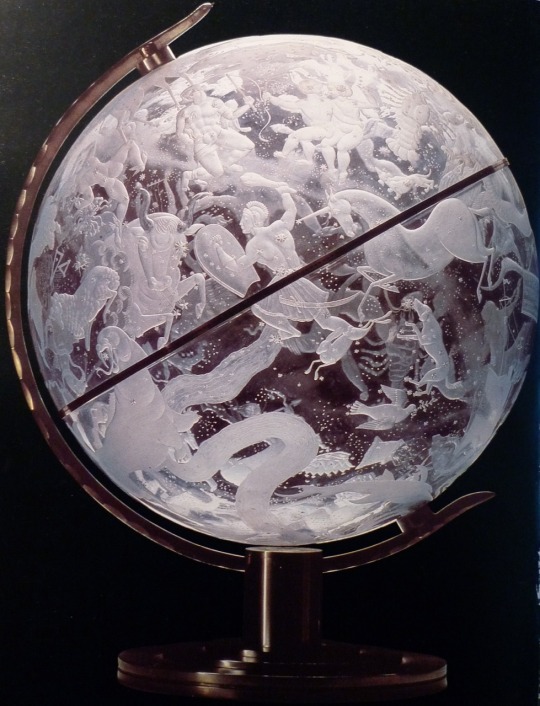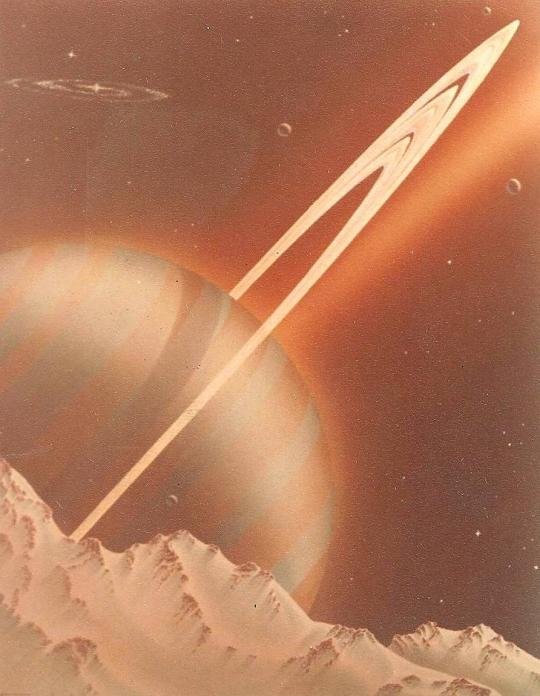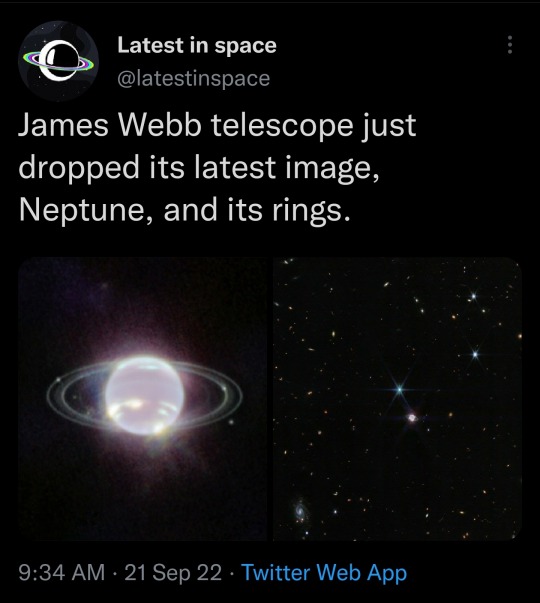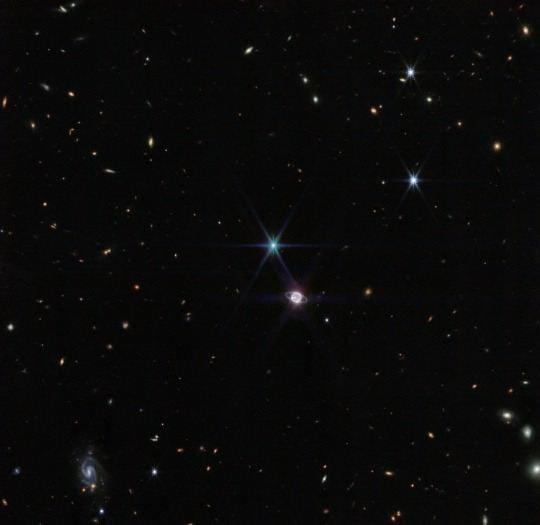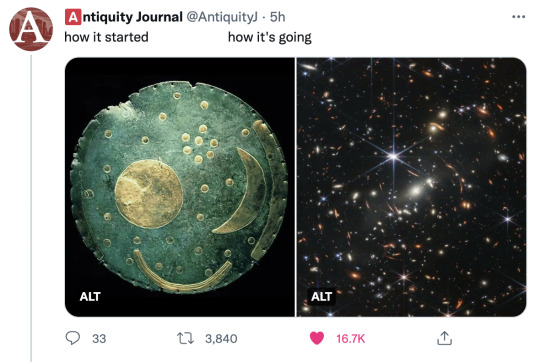Text
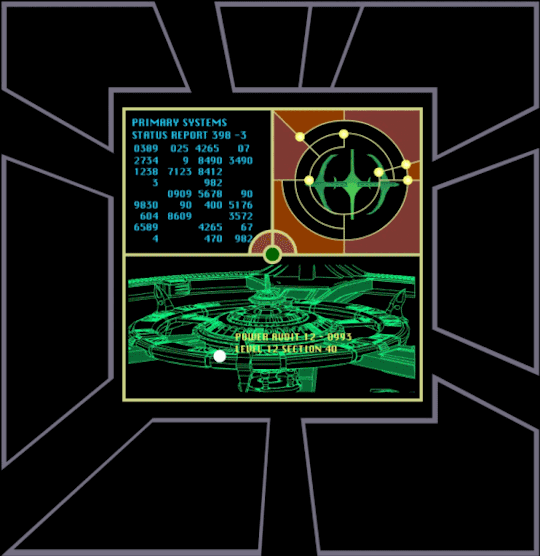
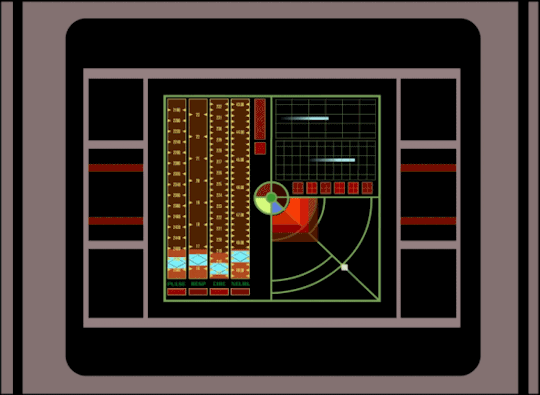

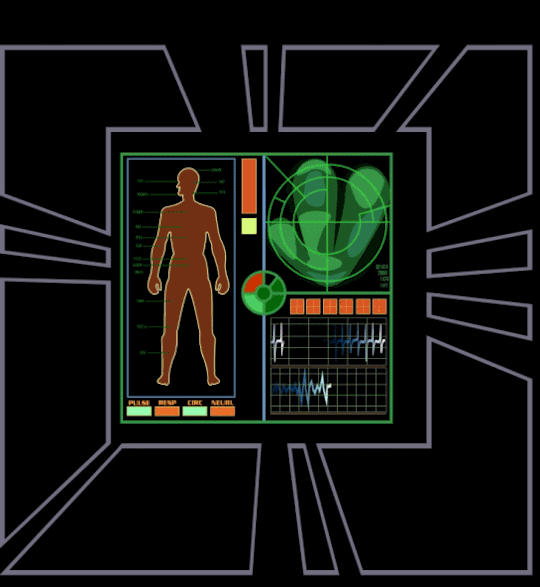
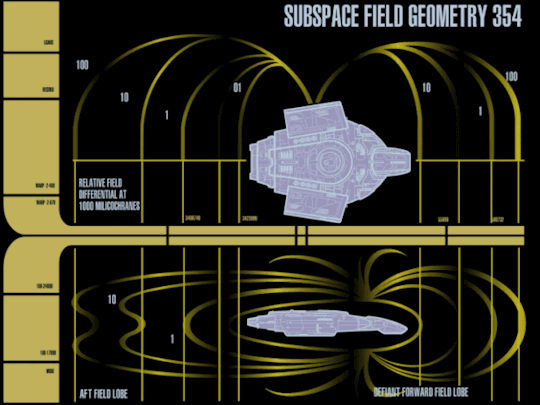

Some Star Trek DS9 computer animations
Gifs made by me based on the animations found here [x]
2K notes
·
View notes
Text
Does anybody have any recommendations for existential sci-if books similar to Ted Chiang and Bo-Young Kim? Bonus if it’s a short story collection.
2 notes
·
View notes
Photo
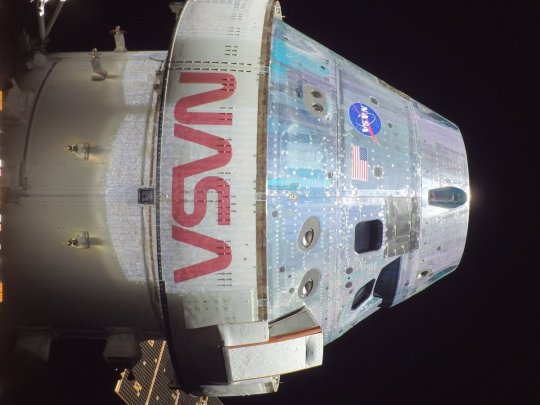
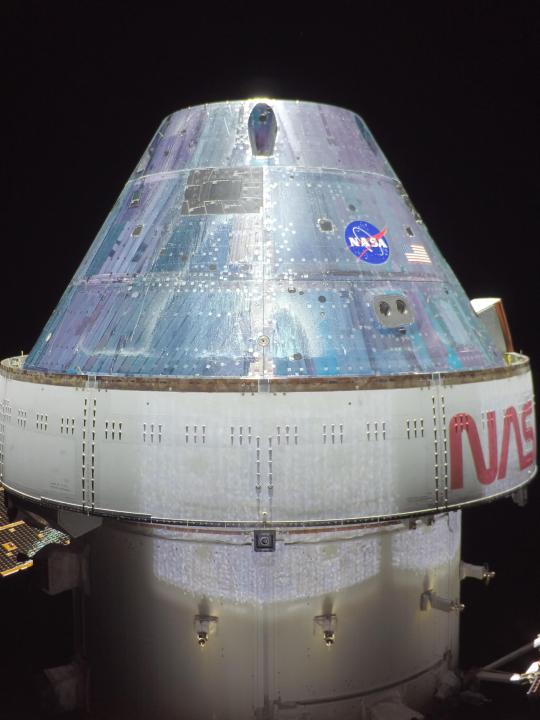
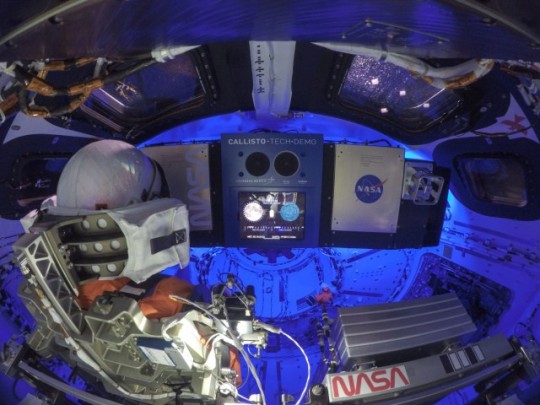
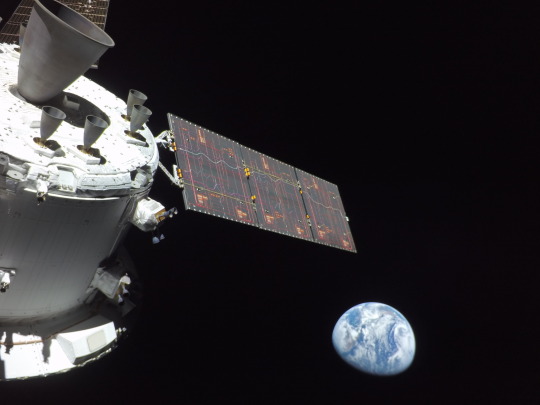
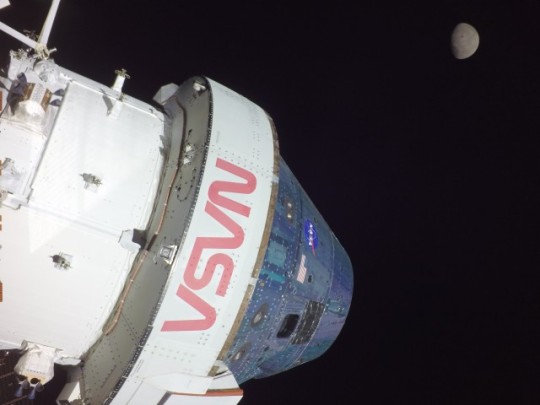
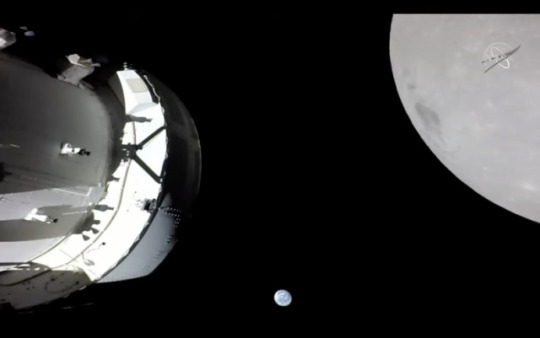

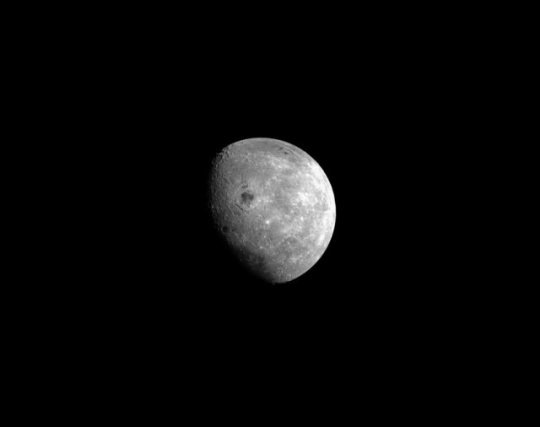
Artemis I – Flight Day Six: Orion Performs Lunar Flyby, Closest Outbound Approach
On its sixth day into the Artemis I mission, Orion successfully completed its fourth orbital trajectory correction burn using the auxiliary engines at 1:44 a.m. CST ahead the first of two maneuvers required to enter a distant retrograde orbit around the Moon. The first three trajectory correction burns provided an opportunity to fire all three thruster types on Orion with the first using the large orbital maneuvering system engine, the second using the small reaction control system thrusters, and the third using the medium-sized auxiliary engines.
Orion completed the outbound powered flyby at 6:44 a.m., passing about 81 miles above the surface at 6:57 a.m. The spacecraft speed increased from 2,128 mph before the burn to 5,102 mph after the burn. Shortly after the outbound flyby burn, the space craft passed about 1,400 miles above the Apollo 11 landing site at Tranquility Base at 7:37 a.m. Orion later flew over the Apollo 14 site at about 6,000 miles in altitude and then over the Apollo 12 site at an altitude of about 7,700 miles
“The mission continues to proceed as we had planned, and the ground systems, our operations teams, and the Orion spacecraft continue to exceed expectations, and we continue to learn along the way about this new, deep-space spacecraft,” said Mike Sarafin, Artemis I mission manager, in a Nov. 21 briefing at Johnson Space Center.
The spacecraft was preparing for the Outbound Powered Flyby maneuver which would bring it within 80 miles of the lunar surface, the closest approach of the uncrewed Artemis I mission, before moving into a distant retrograde orbit around the Moon. The spacecraft entered the lunar sphere of influence Sunday, Nov. 20, making the Moon, instead of Earth, the main gravitational force acting on the spacecraft.
Orion will enter distant retrograde orbit beyond the Moon on Friday, Nov. 25 with the second maneuver, called the distant retrograde orbit insertion burn.
The orbit is “distant” in the sense that it’s at a high altitude from the surface of the Moon, and it’s “retrograde” because Orion will travel around the Moon opposite the direction the Moon travels around Earth. This orbit provides a highly stable orbit where little fuel is required to stay for an extended trip in deep space to put Orion’s systems to the test in an extreme environment far from Earth.
Orion will travel about 57,287 miles beyond the Moon at its farthest point from the Moon on Nov. 25, pass the record set by Apollo 14 for the farthest distance traveled by a spacecraft designed for humans at 248,655 miles from Earth on Saturday, Nov. 26, and reach its maximum distance from Earth of 268,552 miles Monday, Nov. 28.
As of Monday, Nov. 21, a total of 3,715.7 pounds of propellant has been used, 76.2 pounds less than prelaunch expected values. There are 2,112.2 pounds of margin available over what is planned for use during the mission, an increase of 201.7 pounds from prelaunch expected values.
Just after 2:45 p.m. CST on Nov. 21, Orion had traveled 216,842 miles from Earth and was 13,444 miles from the Moon, cruising at 3,489 miles per hour.
279 notes
·
View notes
Text


GLASS-z13 - The Oldest Galaxy Every Found ?
Straight off the bat, JWST was causing a stir amongst astronomers, looking for those galaxies with the most red shift.
Red shift is the phenomena whereby waves emitted by objects travelling away from us are stretched, causing light to appear more and more red, the faster it's moving away from us.
As the universe appears to be expanding at a uniform rate, we can say the most distant objects are also the ones moving away fastest and are also the oldest.
GLASS-z13's red shift puts it 100 million years older than the previous GN-z11 which stood at 400 million years after the Big Bang, so GLASS-z13 brings us to just 300 million years after.
BUT ...
Yeh, there's always a BUT.
The methodology used to create the image and convert the data to colours opens the reading to a much higher level of uncertainty than that of GN-z11, and therefore, it could be, that it's not as old as it first appears to be.
Don't worry, JWST is equipped with just the tool to bring that uncertainty right down, and give a much more accurate reading.
Something tells me, you'll be seeing this red splodge again sometime soon.
137 notes
·
View notes
Photo
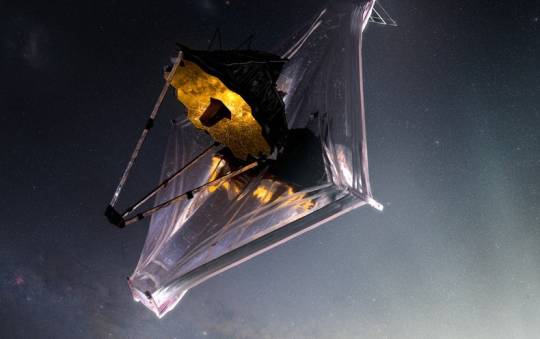
New Revelations Raise Pressure on NASA to Rename the James Webb Space Telescope - Scientific American
Sadness. Disappointment. Frustration. Anger. These are some of the reactions from LGBTQ+ astronomers over the latest revelations regarding NASA’s decision not to rename the James Webb Space Telescope (JWST), given that the agency long had evidence suggesting its Apollo-era administrator James Webb was involved in the persecution of gay and lesbian federal employees during the 1950s and 1960s.
The new information came to light late last month when nearly 400 pages of e-mails were posted online by the journal Nature, which obtained the exchanges under a Freedom of Information Act (FOIA) request. Since early last year, four researchers have been leading the charge for NASA to alter the name of the $10-billion flagship mission, launched in December 2021, which will provide unparalleled views of the universe. The e-mails make clear that, behind the scenes, NASA was well aware of Webb’s problematic legacy even as the agency’s leadership declined to take his name off the project.
“Reading through the exchanges, it seems that LGBTQ+ scientists and the concern we raised are not really what they care about,” says Yao-Yuan Mao of Rutgers University, who maintains the online Astronomy and Astrophysics Outlist of openly LGBTQ+ researchers.
“It’s almost amusing how incompetent the whole thing was,” says Scott Gaudi, an astronomer at the Ohio State University, “and how little they stopped to think of how important an issue this was to the queer astronomical community and how important NASA is for young queer kids trying to find aspirational reasons to just keep going.” …
21 notes
·
View notes
Text

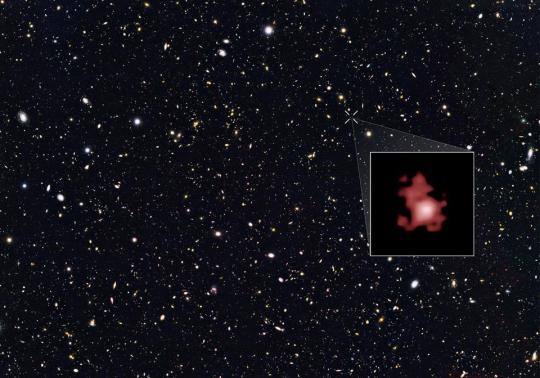



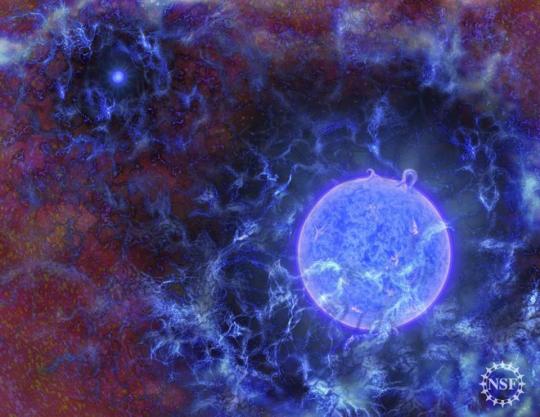


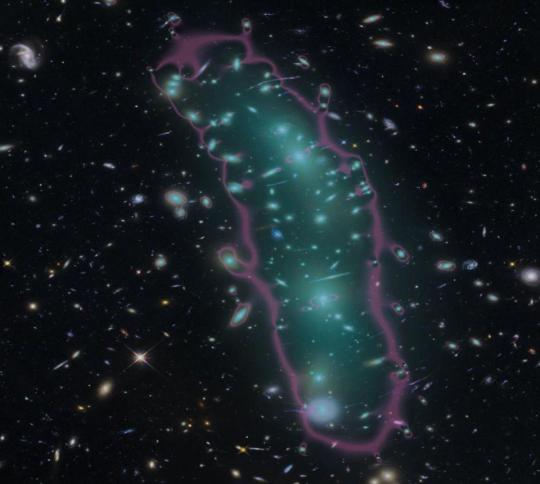

The 3 Ways Science Could Break The Cosmic Distance Record
"If you want to find the most distant galaxies ever, you have to understand what’s involved with setting the current record. We have to look in wavelengths of light that can still be seen despite being stretched by the expanding Universe. We have to look past, and through, the wall of neutral atoms that obscures our optical view of the Universe during the first 550 million years. And we have to either have enough observing time or an assist from gravitational lensing to identify the farthest, faintest objects of all.
And yet, there’s hope. The James Webb Space Telescope is optimized to search for exactly these types of objects: the first stars and galaxies of all. It will be capable, with its near-and-mid-infrared instruments and the passive and active on-board cooling systems, of seeing objects from as early as just 200-250 million years after the Big Bang: when the Universe was just 1.5% of its current age. Records aren’t always made to be broken, but as long as we’re willing to invest in pushing the frontiers, the cosmic horizon of the great unknowns will continue to recede ever farther into the distance."
The current record for farthest galaxy ever is GN-z11: from when the Universe was just 407 billion years old, or 3% of its current age. Here's why we haven't surpassed that limit just yet, but why (and how) James Webb is the perfect tool to take that record down.
74 notes
·
View notes
Text

Hubble Telescope image vs. James Webb Telescope.
22 notes
·
View notes
Text
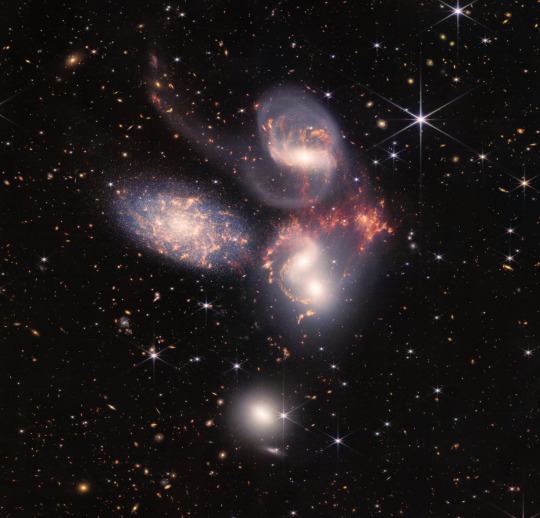
A new image of Stephan’s Quintet from the James Webb Space Telescope, with the mid-infrared view here:
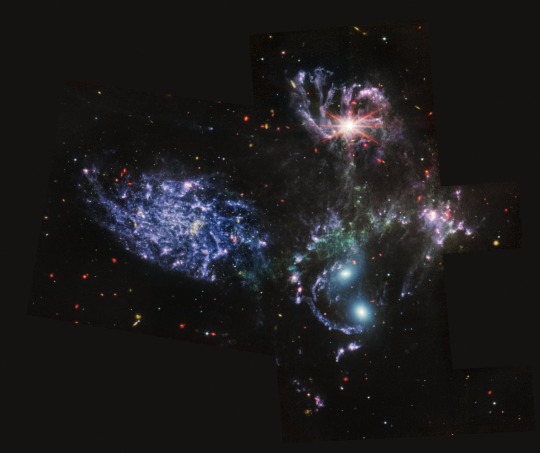
379 notes
·
View notes
Text
COMPARISON PHOTOS: hubble vs james webb
SMACS 0723
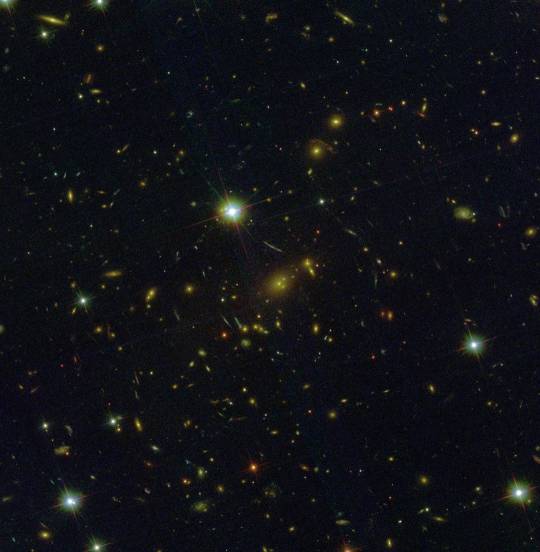
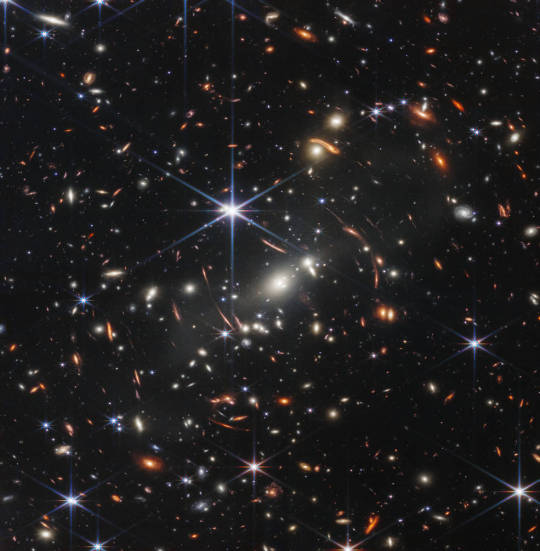
southern ring nebula
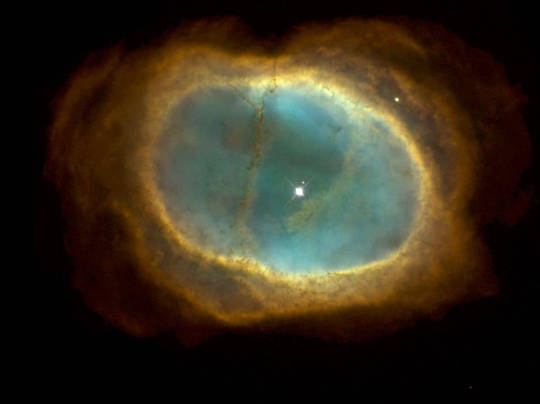

carina nebula (NGC 3324)
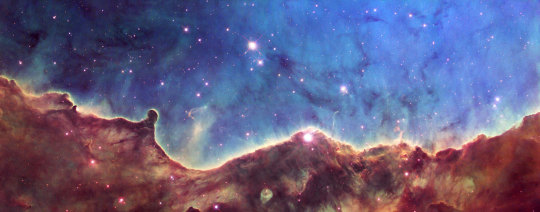
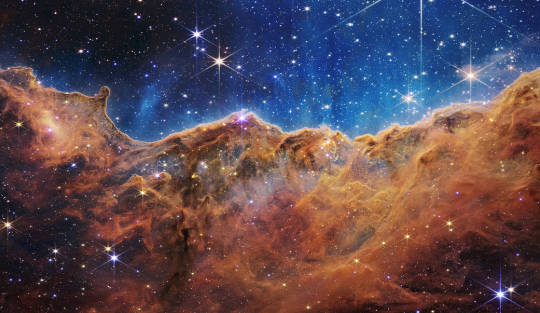
stephan's quintet

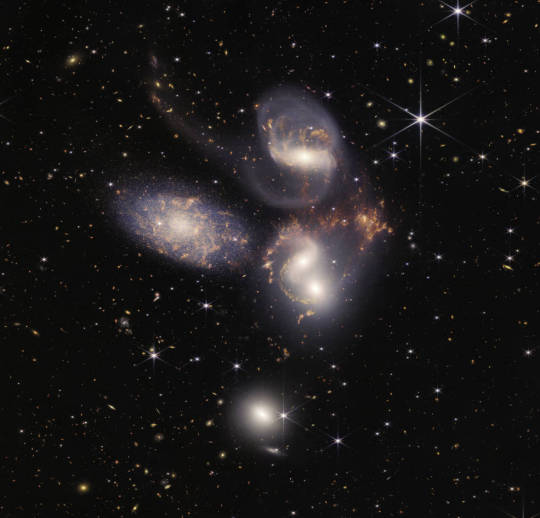
66K notes
·
View notes
